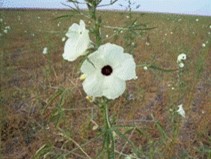Groundwater Phytoremediation
The area surrounding the landfill has a high groundwater table and one of the requirements for landfill operations is to maintain separation between the highest groundwater and waste in the landfill. To keep the groundwater table low, groundwater is pumped from twenty-six groundwater extraction wells along the northern and western landfill boundaries.
Shallow groundwater in this area of the valley contains boron and selenium. These minerals are naturally-occurring but the concentrations in the pumped groundwater is too high for the water to be released into the adjacent Willow Slough bypass.
Phytoremediation (using plant activity for treatment) is used to reduce the boron and selenium concentrations present in the groundwater. The Phytoremediation process consists of a piping system, a storage reservoir, and a land application area. During the wet season, excess groundwater is piped to the reservoir for storage. Then during the dry season, the water is piped to the land application area, two 45–acre parcels of land, where it is used to irrigate Fawn Tall Fescue. Fawn Tall Fescue, a common pasture grass, is a plant known to accumulate boron and selenium. Fawn Tall Fescue is planted annually in one parcel while the other parcel remains fallow. The fescue is harvested to be used as animal feed or bedding off site, and alternative daily cover (in place of soil) at the landfill. The fields are rotated every few years to avoid over saturation of the soil.


